The exact date of the return of Odysseus to Ithaca
Could it have been October 25th-30th, 1207 B.C.?
by Anne-Marie de Grazia
"I've just read with fascination the article on the exact date of Odysseus' return to the palace and his killing of Penelope's wooers. Really very good."
This article is based on the article "A New Astronomical Dating of Odysseus' Return to Ithaca," by St. P. Papamarinopoulos, P. Preka-Papadema, P. Antonopoulos, H. Mitropetrou, A. Tsironi and P. Mitropetros, published in Mediterranean Archaeology and Archaeometry, Vol. 12, N°1, pp. 117-128 (Athens, 2012)
Click here for the original article by Stavros Papamarinopoulos et al.
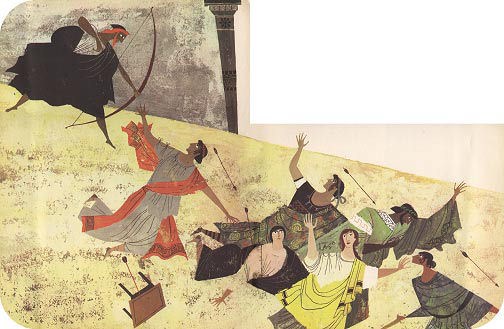
"...and the sun has perished out of heaven and an evil mist covers all..." (Homer, Odyssey, 20, 356-357).
Already the ancient astronomer and philosopher Heraclides Ponticus, or Heraclides of Pontus (c. 390 - c.310 B.C.) in his Allegories, 75, 1, 1-9, 3, has explained this passage of the Odyssey as referring to a solar eclipse. He was the first to our knowledge to state that the seer Theoclymenos was thus announcing to the wooers assembled in Odysseus' palace the onset of a solar eclipse, which would see the hour of their own undoing.
But was Heraclides really the first? He was a trusted acolyte of Plato, who left him in charge of his Academy when he left for Sicily. Heraclides may merely have fixed in writing an ancient knowledge which had been passed on to the Academy. He was one of the most important astronomers of Antiquity, and was the first to propose that the Earth rotates on its axis from West to East in 24 hours. According to Chalcidius, he proposed a model of the solar system in which Venus, and possibly Mercury, rotated around the sun, thus explaining the variations in their brilliance. This model is considered to have been the first step towards heliocentrism. Copernicus himself claimed Heraclides as his predecessor. Certainly, Heraclides would have been the autority on celestial mechanics of his time.
At the head of a team of scholars and researchers, Stavros Papamarinopoulos, Professor of Geomythology at the University of Patras, Greece, has set out to define the exact date of this eclipse, referred to in the Odyssey, from which could readily be deduced the all-important date of the beginning of the Trojan War, as the war itself lasted ten years, followed by ten more years of wanderings for Odysseus, before he found back to his kingdom on the island of Ithaca, a homecoming which, according to the narrative, would have occurred five days before the eclipse in question.
But is it legitimate to expect scientific accuracy from the Homeric texts?

Stavros Papamarinopoulos at the Quantavolution Conference, Kandersteg, 2009
"The ancient Greeks knew what ‘a genuine myth' meant," states Papamarinopoulos. "For instance, Plutarch (Fragmenta, 157) says the following: ‘The old physical science for both the Greeks and the Barbarians is natural logos (logos in Antiquity meant fact) hidden deeply within myth.' Much earlier than Plutarch, Plato, in the 4th century B.C., stated in The Republic (379a): ‘And to founders it pertains to know the patterns on which poets must compose their fables and from which their poems must not be allowed to deviate.' We can deduce from this that some of the poets would sometimes deviate from the recorded tradition, which was passed on to them orally, and that they had to be called back to order."
Homer was undoubtedly beholden to the same constraints, and his very ancienty, and greater closeness to the "logos" itself, would make him particularly reliable. In the volume Science and Technology in Homeric Epics (2008), a collection of papers given at a Symposium which took place in Ancient Olympia, Greece, August 27-31, 2006, of which Prof. Papamarinopoulos was an organizer, there are numerous papers in which Homer, being tested repeatedly with the principles of modern science, is found to be accurate.
On day -5 before the eclipse, Odysseus lands alone and incognito on the shores of his home island of Ithaca, of which he is still nominally the king, and from which he has been absent for twenty years. He is welcomed by the swineherd Eumaeus, in whose hut he reconnects with his own young adult son Telemachus, before being taken back, in a beggar's disguise, to his palace, where well-born parasites, under pretext of his death, have established themselves and are squandering his fortune while wooing his supposedly widowed wife, whom custom would compel to wed one of them.
Books 20 to 22 of the Odyssey relate the events of the day of the eclipse. The action takes place in the palace, at a banquet of the assembled wooers, with Odysseus in disguise, Telemachus and Theoclymenus, an aged seer from afar, and several servants. It is a general feast day, and many animals are being slaughtered, "and men fell to slaying great sheep and fat goats, aye, and fatted swine, and the heifer of the herd." [Od. 20, 250-251]. As was customary, even down to the middle of the XX. century in Central Europe, in feasts where animals are slaughtered on the spot, the ensuing banquet occurs in two phases, a first repast, here called deipnon, where the entrails are consumed, as these delicate parts, which spoil quickly, must be roasted and eaten at once, washed down with wine; a few hours later, this is followed by the main banquet, which Homer refers to as dorpon, after the large, meaty pieces have had time to be cooked and prepared. The intervening time being traditionally filled with some games or entertainment.
Book 20 deals with the early, deipnon part of the banquet. Taunting, near brawls and discussions erupt on the side of the wooers, over the presence at the banquet of the unknown beggar Odysseus, who is steadfastly defended by Telemachus. Matters reaching a pitch, the goddess Athena, ever watchful, roused among the wooers "unquenchable laughter, and turned their wits awry. And now they laughed with alien lips, and all bedabbled with blood was the flesh they ate, and their eyes were filled with tears and their spirits sets on wailing." [Od. 20, 345-346]. This is the moment when the seer Theoclymenos speaks his prophesy of the solar eclipse (which may already have begun to set in), and the doom of the wooers.
"‘Ah, wretched men, what evil is it that you suffer? Shrouded in night are your heads and your faces and your knees beneath you; kindled is the sound of wailing, bathed in tears are your cheeks, and sprinkled with blood are the walls and the fair rafters. And full of ghosts is the porch, of ghosts that hasten down to Erebus beneath the darkness, and the sun has perished out of heaven and an evil mist hovers over all.' So he spoke, but they all laughed merrily at him." [Od. 20, 351-358].
The wooers are too drunk and confused to notice the change in the light, or to understand that their doom is approaching. They call for Theoclymenos to be expulsed from the banquet hall. "Quick, ye youth, convey him forth out of doors, to the place of assembly, since here he finds it like night !" [Od. 20, 361-362]. Theoclymenos leaves by himself, reiterating his warning.
Books 21 and 22 cover the hours, traditionally given over to games, between the deipnon and the dorpon parts of the banquet. In fact, we know from book 20 already, that the wooers will never get to eat the dorpon: "But never could meal have been more graceless than a supper such as a goddess [Athena] and a mighty man [Odysseus] were soon to set before them." [Od. 20, 390-391]. Their "supper" will be death.
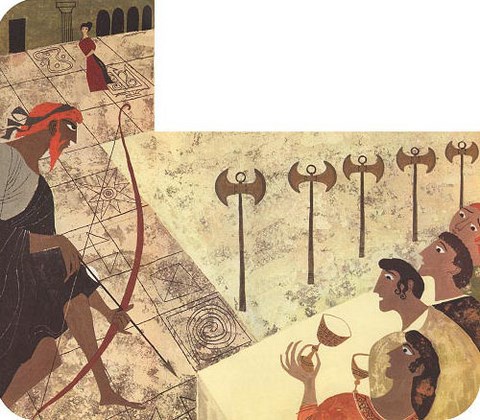
In Book 21, in a contest ordained through the intervention of Penelope herself, the wooers seek to string Odysseus' old bow, and to repeat Odysseus feat of archery of sending one single arrow through the eye of twelve aligned axes. None of the suitors is able to string the bow, and new squabbles arise over whether the beggar should be allowed a turn at trying. Odysseus strings his bow, and achieves the impossible feat. With his newly found authority, he takes in hand the ordering of the banquet's proceedings: "But now is the time that supper too may be made ready for the Achaeans, while yet there is light, and thereafter must yet other sport be made, with song and with the lyre; for these are the accompaniment of a feast." [Od. 20, 428-430] This is the signal for the beginning of the massacre of the wooers.
After the wooers have been killed, the twelve maidservants who used to be their lovers are ordered into the hall to help dispose of the bodies and clean up the blood and gore, after which they themselves are all hanged by Telemachus, "like thrushes or doves, falling into a snare... and they writhed a little with their feet, but not long." [Od. 20, 470 -474]
All this happens while "yet there is light." Then Odysseus calls on his old nurse Eurycleia: "Bring sulphur, old dame, to cleanse from pollution, and bring me fire, that I may purge the hall." [Od. 20, 481-482)
Only after this is done, and Odysseus has "thoroughly purged the hall, the house and the court," are the other maidservants let in and "they came forth from their hall with torches in their hands." [Od. 20, 496].
Night has fallen. The deed is done.
This succession of events would point to a solar eclipse occurring in mid-afternoon, atteigning its maximum after the departure of Theoclymenos from the banquet hall, between the deipnon and the dorpon, during the time of "entertainment" (i.e. of the massacre of the wooers) and therefore considerably narrows down the number of eclipses to be considered for a given time.
As to the time frame, Papamarinopoulos and his collaborators, P. Preka-Papadema, of the Department of Astrophysics of the University of Athens, and P. Antonopoulos of the Department of Physics of the University of Patras, give in their original article two tables of datings of the Trojan War, one with dates advanced by ancient authors and documents, ranging from 1514 to 1171 B.C., the other with dates proposed by modern archaeologists and historians, ranging from 1270 to the 10th century B.C. They chose to concentrate their attention to the time span between 1300-1130 B.C. "We choose to begin from 1300 B.C. because in this latter period the Achaeans had reached the maximum political, economic and military organization and they would have been capable to organize a 1200 ships naval power [Iliad, 2, 494-762 and Iliad 2, 816-877) ready to act away from Greece in Troy. We also extend it by 41 years beyond 1171, until 1130 B.C., in order to include the destruction of the ruling system of the Achaeans Palaces. From Xavier Jubier's website "Five Millennium (-1999 to +3000) Canon of Solar Eclipses Database" based on Espenak & Meeus (2006), we found 64 solar eclipses (Total or Annular or Hybrid or Partial) which could be visible from the Ionian Islands region during 1300-1130 yr B.C. The NASA's list is based on models VSOP87D for the calculation of the position of Sun and ELP-2000/82 for the calculation of the position of the Moon (Espenak & Meeus 2006 & 2009c).
However, as Prof. William C. Mullen pointed out to Prof. Papamarinopoulos at a Quantavolution-Conference in Kandersteg, Switzerland, 2009, there are remarkable seasonal and astronomical observations in the narrative of Odysseus' return which must be taken into account and will allow to further whittle down the number of eclipses to be taken into account.
For instance, concerning the seasons:
Upon having swum to a river bed to avoid being violently tossed onto the shore at Scheria after the sinking of his raft, only a few days before his return to Ithaca, Odysseus ponders his situation thus: "If here in the riverbed I keep watch throughout the weary night, I fear that together the bitter frost and the fresh dew may overcome me, when from feebleness I have breathed forth my spirit; and the breeze from the river blows cold in the early morning." [Od. 5, 466-469]. "He crept beneath two bushes who grew from the same spot, one of thorns and one of olive [Od. 20,476-477]... Beneath these Odysseus krept and straightway gathered with his hands a broad bed, for fallen leaves were there in plenty, enough to shelter two men or three in winter time, however bitter the weather [Od. 20, 481-485].
Upon Odysseus' arrival in Ithaca, where he found shelter with the swineherd Eumaeus, "the night came on, foul and without a moon, and Zeus rained the whole night through, and the West Wind, ever the rainy wind, blew all night long." [Od. 14, 457-458]. Eumaeus "placed a bed for Odysseus near the fire, and cast upon it skins of sheep and goats; there Odysseus lay down and the swineherd threw over him a great thick cloak, which he kept as a change of clothing whenever a terrible storm should arise." [Od. 14, 419-423].
The following day, Odysseus is determined to leave for the town "as soon as I have warmed myself at the fire, and the sun has grown hot; for miserably poor are these garments that I wear, and I fear lest the morning frost may overcome me." [Od. 17, 23-25].
Clues come from animal husbandry as well...:
"And the swine and the swineherds drew near. The sows they shut up in their wonted sties, and a wondrous noise arose from them as they were penned." [Od. 14, 410-411]. "At daybreak, let him eat, and follow our masters swines." [Od. 15, 397] The animals are penned up at night, not left outside.
...and from men's habits and from astronomy:
"...take thy joy, and drink thy wine, as thou sittest there. These nights are wondrous long. There is time for sleep, and there is time to take joy in hearing tales; thou needest not lay down till it be time; there is weariness even in too much sleep." [Od.15, 392-394].
"And his mother sat over against Telemachus by the door-post of the hall, leaning against a chair and spinning fine threads of yarn." [Od. 17, 96-97]. Arete too, a few days earlier in Scheria, was seen spinning.
Odysseus' father Laertes, "when summer comes and rich autumn," sleeps in the open in his vineyard "then all about the slope of the vineyard plot are strewn his lowly beds of fallen leaves." [Od. 11, 193-194]. It is in this vineyard that Odysseus finds him, "he found his father alone in the well-ordered vineyard, digging about a plant," [Od. 24, 226] presumably loosening the soil around a vinestock.
All this clearly points to a return of Odysseus in autumn.
From the 64 solar eclipses (Total or Annular or Hybrid or Partial) observed in Greece in the Ionian Islands within this period of 230 years, only 14 were visible in September, October and November.
We find more clues from astronomy: we have already seen in Od. 14, 457, referring to day -5 before the eclipse, that "now the night came on, foul and without a moon."A solar eclipse can only occur on the day of the New Moon, which is consistent with the oath made by incognito Odysseus to Eumaeus in Od. 14, 161-162: "In the course of this selfsame day Odysseus shall come hither, as the old moon wanes and the new moon appears. He shall return, and take vengeance on all those who here dishonor his wife and his glorious son." [Od. 14, 161-164] - meaning exactly: Odysseus will return on the day of the New Moon. Odysseus, still incognito, repeats the same oath to Penelope two days later: "In the course of this very moon will Odysseus come hither, as the old moon wanes and the new appears." [Od. 19, 306-307]. This might suggest that Odysseus has foreknowledge of the eclipse, and that he is planning carefully his "return" - the murder of the wooers and the shedding of his incognito - to be synchroneous with it. At any rate, it is consistent with the night of day -5 "coming" without a moon, as the moon would then be waning and would not be visible at the beginning of the night.
As concerns the moon, the requirement for a solar eclipse is thus fulfilled: the day of the prophesy of Theoclymenos is indeed the day of the new moon.
However, Homer furnishes two more astronomical clues concerning Odysseus' return to Ithaca.
The first is planet Venus, which is visible in the East, as a morning star, at the dawn of day -5, as the Phaeacians' ship brings the sleeping Odysseus to Ithaca: "Now when that brightest of stars rose which ever comes to herald the Dawn, even then the seafaring ship drew near to the island." [Od. 13, 93-95]. The second concerns the Pleiades (belonging to the constellation of Taurus), as well as Boötes, (the constellation containing Arcturus) Ursa Major and Orion which were visible all nights during his trip after he left the island of the goddess Calypso: "and he sat and guided his craft skillfully with the steering-oar, nor did sleep fall upon his eyelids, as he watched the Pleiads, and late-setting Bootes, and the Bear, which men also call the Wain, which ever circles where it is and watches Orion, and alone has no part in the bath of Ocean. For this star Calypso, the beautiful goddess, had bidden him to keep on the left hand as he sailed upon the sea. For seventreen days then he sailed upon the sea, and on the eighteenth appeared the shadowy mountains of the land of the Phaeacians." [Od. 5, 270-280]. This requires the simultaneous presence of the Pleiades and of Boötes in the night sky, which occurs only two times in the year, during spring and autumn.
Papamarinopoulos and his collaborators state: "It is known that Venus is visible either in the East or in the West. In order to demonstrate if Venus is really in the east five days before the day of the solar eclipse, we used the Starry Night 6 Pro Plus. The latter offers the position of the eight major planets within 5 arcseconds accuracy for a 3000 year time span to the present. Similarly, the moon's position is accurate within 10 arcseconds for several thousand years in either direction. We used Ithaca's coordinates (38° 22' 0" N, 20° 43' 03 E) as representative for all Ionian Islands. From this mentioned study, five of the 14 solar eclipses (Total or Annular or Hybrid or Partial) remain available for further analysis, because they satisfy the first Homeric condition. However, three of them (1298, 1252 and 1234 B.C.) would not have been practically visible. From the remaining two, the first, which has occurred in 1143 B.C. is to be rejected since the Achaean palaces economic and organization system has by then already collapsed. The last remaining one, however, seems to satisfy both Homeric conditions... This is the annular solar eclipse of the 30th of October, 1207 B.C. (JD 1280869). It was visible in the Ionian Islands with a significant 75% obscuration of the solar disc.
In order to calculate the sun's illuminance during the solar eclipse, we used the equation (Eq.1) proposed by Möllmann and Vollmer (2006):
L/Lmax=1-p (1)
L = the Sun's illuminance during the solar eclipse
Lmax = the maximum of the Sun's illuminance
p = the obscuration of the solar disc
By setting p=0.75 in the equation (1) the sun's illuminance becomes 25% of its total value. The latter means a significant reduction of illuminance which is absolutely compatible with Homer's phrase [Od. 20, 357)kaki axlus, meaning "evil mist."
The phenomenon started at local time (LT) 14:30 (12:30 UT) and ended at 17:25 LT (15:25 UT) in the Ionian islands. The maximum 3/4 obscuration of the sun was observed at 16:00 LT (14:00 UT) in the afternoon and before the dorpon's preparations.
The eclipse's maximum time coincides with the suitors' killing and it ended just before sunset as, immediately after the killing, the servants come with torches and shed light [Od. 22, 497] and [Od. 23, 290-293]. In accordance with 'Starry Night' calculations, Homer's description in the above mentioned passages fit with the sunset at 17:58 LT (15:58 UT) on the 30th of October 1207 B.C. (JD 1280869)."
How does this date fit with the two astronomical indications given by Homer?
On day -5 before the eclipse, the day of Odysseus arrival in Ithaca, we have seen that Venus is visible as a morning star. "As 'Starry Night Pro Plus' shows, on October 25th, 1207 B.C., Venus was then indeed observable in the eastern sky, within the constellation of Libra," as stated in Papamarinopoulos' article. Venus rose at 05:13 LT and the Sun at 06:50 LT. "Venus with exceptional clarity (magnitude = -3.94) was for 1 1/2 hour before sunrise at an altitude of 18° above the horizon."
The "Venus" condition is clearly met.
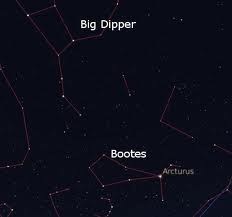
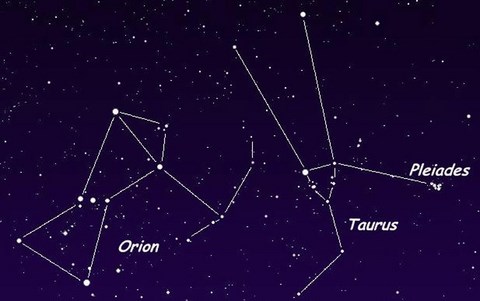
The second condition, concerning the constellations of the Pleiades (Taurus), Boötes, Ursa Major and Orion, concerns configurations which are recurrent annually, and concern all Mediterranean latitudes. Explains Papamarinopoulos: "Odysseus is... travelling West to East having to his left always Ursa Major. The mariner observes the latter and the Pleiades and Boötes all night (between 19:30 and 05:30 LT). Homer says in Od. 5, 272-274: "as he watched the Pleiades, and late-setting Boötes, and the Bear, which men also call the Wain, which ever circles where it is and watches Orion." The Greek word dokenei is semantically stronger than the English ‘watches.' The Greek word contains the elements of anxiety and persistence of the animal waiting for its hunter, Orion, to come. And indeed this happens. Orion appears at 22:30 LT, two hours after the previously mentioned constellations. The Pleiades are moving from east to west all night while Boötes is in the north-west sky on its course to set. Homer uses the phrase Opse duonta Bootin. It means literally that Boötes is attempting to set slowly, but in reality it doesn't do so completely. Boötes' two stars beta Boötes (Nekkar) and gamma Boötes (Seginus) do not set at all! As Boötes approaches slowly its setting, these two stars remain above the horizon steadily. Then sequentially Boötes starts to rise again, remaining all visible above the horizon in the north-east sky all night up to sunrise. Bootes dives in a setting mode initially in the north-west direction and then continues emerging up moving in a north-east direction."
The conditions of the second Homeric clue are fulfilled in the case of an autumn eclipse, and are therefore consistent with the solar eclipse of 30th October, 1207 B.C.
We should therefore be able to date the return of Odysseus to Ithaca to October 25th, 1207 B.C., and the slaying of the wooers to October 30th, 1207 B.C.* Which would put the beginning of the Trojan War in 1227 B.C. and its end in 1217 B.C.
Anne-Marie de Grazia
Copyright © August 2012
* Notice that, in Homer, this is a feast day, accompanied by a large slaughtering of animals. We cannot help being struck by its closeness, in terms of the calendar, to our own Halloween-All Saints' Day- Day of the Dead.
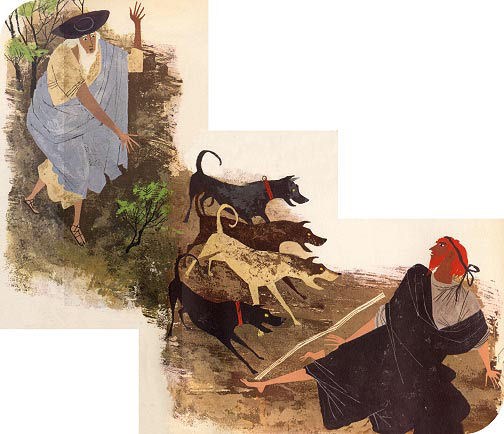
The illustrations are taken from the wonderful set created for a children's book in 1956 by Alice and Martin Provensen (published by Simon & Schuster in the US and les Deux Coqs d'Or, France) which have introduced me and many others of my generation at a tender age to an incredibly stylish and poetic vision of the Homeric world. Lucky were we, and thanks be to them! - Ami de G.
The full set of images can be seen on a French site (click here)

